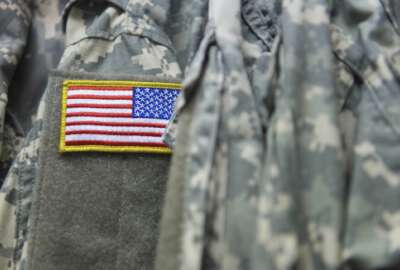

The newest study states sexual assaults are more likely in commands where harassment is common.
In the past two months, two damning reports on the effects of sexual harassment and assault in the military have come out of one of the Defense Department’s most used research institutions.
Most recently, the RAND Corporation released a study that found sexual harassment in a servicemember’s work environment is strongly associated with the risk of sexual assault.
“On average, service women’s sexual assault risk increased by more than a factor of 1.5 when they worked in environments where the rates of ambient sexual harassment against women and men were above average, compared with the sexual assault risk for women working where the rates were below average,” the study authors wrote. “Service men’s sexual assault risk increased by a factor of 1.8 when working in such environments.”
The report comes from a survey of more than 170,000 active duty servicemembers.
The study stated that on average servicemembers worked in an environment where about 21% of their female colleagues and 6% of their male colleagues had been sexually harassed in the past year. However, commands varied largely in environment.
“At the extremes, some members served in a unit, installation, and major command where an average of 7% of women were sexually harassed, while others served where 41% of women were sexually harassed,” the RAND authors wrote. “For men, the range spanned an eightfold difference: Some members served in units, installations, and major commands where just 2% of their male peers were sexually harassed, while others served where 17% of men were sexually harassed.”
RAND is recommending a dramatic change in the way the military approaches sex crimes.
The authors state that sexual assault and harassment in the military should be thought of as a single problem or a single underlying workplace disorder.
“When potential offenders work in environments where sexual harassment is observed and unpunished, they learn that mistreating colleagues is permissible,” they wrote. “For some, their behaviors may escalate from mistreatment that is classified as sexual harassment to abuse that is classified as sexual assault.”
The authors also said DoD should emphasize preventing and stopping harassment as a means to stop assault.
“Targeting these lower-level behaviors as part of a strategy to ultimately prevent sexual assaults would allow DoD to focus on behaviors that are more visible and, therefore, more easily sanctioned,”
The newest report was preceded by another RAND study from February that stated servicemembers who were sexually assaulted or harassed were likely to leave the military within two years after the incident.
RAND estimated that 2,000 sexually assaulted servicemembers left the military within two years of the incident. The study states that those servicemembers would not have left were they not assaulted. The same is true of 8,000 servicemembers who were sexually harassed.
Furthermore, the services are losing at least 16,000 manpower years prematurely due to assault and harassment every year.
“These findings suggest that sexual assault and harassment are costly for both the affected service members and the services and that they harm military readiness,” the report states.
The most recent numbers show a 3% increase in reported sexual assaults from 2018 to 2019, totaling more than 6,200 incidents. DoD estimates that 40% of assaults aren’t even reported, however.
The studies come as DoD is struggling to keep women in the military, despite wanting a more diverse force.
Upon taking office, Defense Secretary Lloyd Austin ordered a review of sexual assault in the military. The commission is headed by Lynn Rosenthal, a former White House adviser on violence against women.
Lloyd already outlined some short- and medium-term steps to curb assault and harassment.
Each of the services will need to create new workforces dedicated to violence prevention. He mandated that at least half of the workforce be trained by the end of this calendar year, with the full workforce trained by the end of June 2022.
The undersecretary of Defense for personnel and readiness will also send Austin a report on “high risk” installations “as soon as feasible.” After that, Austin wants to see quarterly command climate survey data from each of those installations, including which ones are “of greatest concern” and which are “showing promise.”
Copyright © 2024 Federal News Network. All rights reserved. This website is not intended for users located within the European Economic Area.
Scott Maucione is a defense reporter for Federal News Network and reports on human capital, workforce and the Defense Department at-large.
Follow @smaucioneWFED



